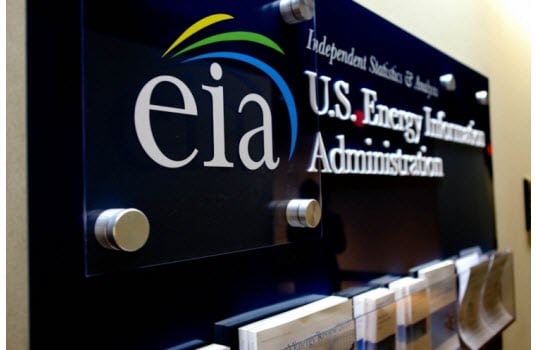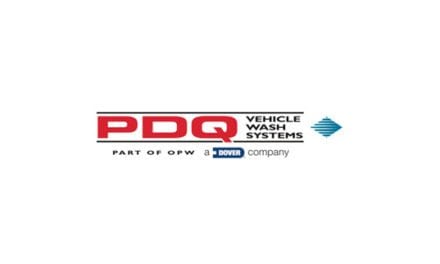Gasoline production by U.S. refiners and blenders is running near record levels over the first seven months of 2017, with four-week rolling average production well above its five-year average and close to the top of its five-year range. Despite growing domestic and foreign demand leading to draws from gasoline stocks over the past seven consecutive weeks, gasoline inventories also continue to remain above their five-year average levels.
Growth in U.S. gasoline production since March is the result of record-high refinery runs. For the week ending April 21, U.S. refinery runs exceeded 17.5 million barrels per day (b/d) for the first time since the U.S. Energy Information Administration (EIA) began publishing the weekly data series in 1990. Refinery runs have since exceeded this threshold six additional times, reaching an all-time high of 17.8 million b/d the week ending on July 28.
Net production of finished motor gasoline (unadjusted refiner and blender net production of finished motor gasoline less use of fuel ethanol to isolate the petroleum component) averaged 9.3 million b/d for the week ending July 28 (Figure 1). This quantity is 70,000 b/d below the five-year high, but still more than 511,000 b/d above the five-year average.

Despite historically high gasoline production levels, cumulative draws from gasoline inventories beginning with the week ending June 16 totaled 14.8 million barrels, resulting in a 6.5% reduction in inventory levels to 227.7 million barrels as of July 28. The July 28 inventory level is nearly 12.6 million barrels below the previous five-year high, but still 6.2 million barrels above the previous five-year average (Figure 2). High levels of exports and product supplied (a measure of domestic demand) are responsible, at least in part, for these recent draws.

Total gasoline exports, including finished gasoline and blending components, began 2017 nearly 90% above the five-year average and remained more than 80% above the average until February 10. Since then, exports of gasoline have trended above the five-year average and along the top of the five-year range. While estimated gasoline exports have slipped the past two weeks, they remain nearly 26,000 b/d above the five-year average as of July 28.
In the first half of 2017, though slightly below its record-high 2016 average, weekly product supplied remained relatively strong, surpassing the five-year average the first week of March, then trending near the five-year high. Prior to 2017, weekly product supplied of finished motor gasoline surpassed 9.80 million b/d only once (the week ending June 17, 2016), but product supplied has surpassed this level four times in 2017 and set a new high of 9.84 million b/d for the week ending July 28. Demand has remained strong, with product supplied surpassing 2016 levels three out of the past four weeks compared with the same weeks last year.
Crude oil prices over the past several months have been relatively stable compared with recent years. Since the first week of April, the 52-week range (the difference between the maximum and minimum prices over the 52-week period) of Brent spot prices has been less than $15 per barrel on a weekly basis, the narrowest range since September 2014. Gasoline prices have also, correspondingly, been relatively stable. As of July 31, the 52-week range for average U.S. regular retail gasoline prices was 30 cents per gallon. With the exception of a two-week period in April, when the 52-week range was one cent per gallon narrower, this is the narrowest 52-week range since March 2004.
EIA’s August Short-Term Energy Outlook forecasts that motor gasoline consumption will be virtually unchanged in 2017, with product supplied expected to increase by 3,000 b/d (less than 0.1%), to an average of slightly more than 9.3 million b/d for the year. In 2016, gasoline consumption increased by 1.6%. The flat forecast for gasoline consumption reflects slower expected growth in non-farm employment and an expected increase in the retail price of gasoline. Gasoline consumption in 2018 is expected to grow by 27,000 b/d (0.3%) from its projected 2017 level.
U.S. Average Regular Gasoline and Diesel Retail Prices Climb
The U.S. average regular gasoline retail price rose 3 cents from the previous week to $2.38 per gallon on August 7, up 23 cents from the same time last year. The Gulf Coast price increased 7 cents to $2.15 per gallon, the Rocky Mountain price increased 5 cents to $2.39 per gallon, the East Coast price increased 3 cents to $2.34 per gallon, the West Coast price increased 1 cent to $2.84 per gallon and the Midwest price increased less than 1 cent, remaining at $2.28 per gallon.
The U.S. average diesel fuel price rose 5 cents to $2.58 per gallon on August 7, 27 cents higher than a year ago. The Rocky Mountain and Midwest prices each increased nearly 6 cents to $2.67 per gallon and $2.54 per gallon, respectively, while the Gulf Coast price increased 5 cents to $2.41 per gallon, the East Coast price increased nearly 5 cents to $2.61 per gallon and the West Coast price increased 3 cents to $2.85 per gallon.
Propane Inventories Unchanged
U.S. propane stocks were virtually unchanged last week at 67.6 million barrels as of August 4, 2017, 24.3 million barrels (26.4%) lower than a year ago. East Coast, Rocky Mountain/West Coast and Midwest inventories increased by 0.6 million barrels, 0.2 million barrels and 0.1 million barrels, respectively, while Gulf Coast inventories decreased by 0.9 million barrels. Propylene non-fuel-use inventories represented 4.3% of total propane inventories.
Sourced from EIA’s This Week in Petroleum








